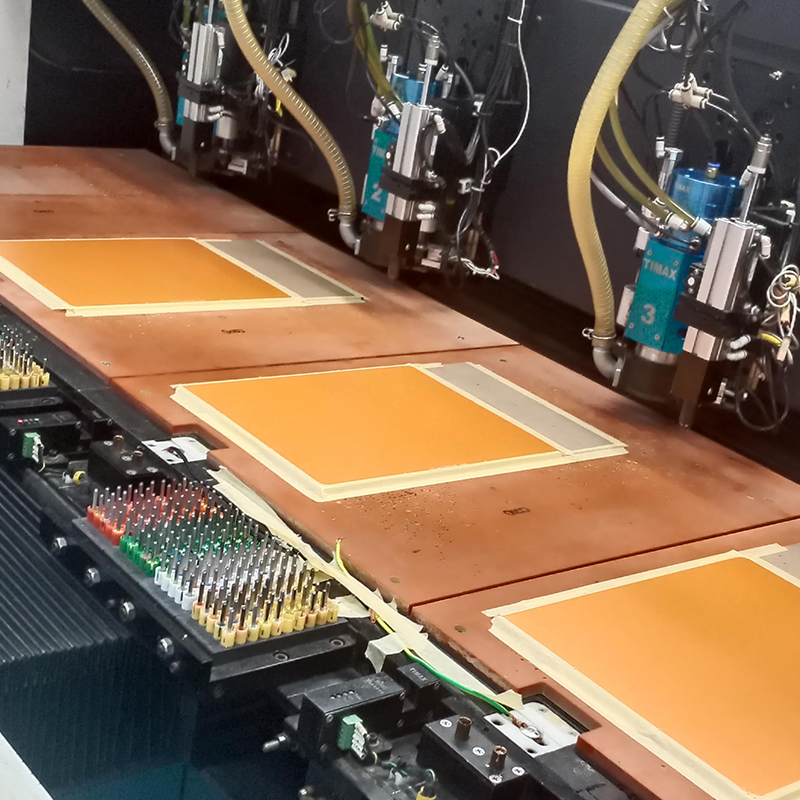In this blog post, we’ll explore the advantages and disadvantages of using rigid-flex circuit boards in IoT sensors and determine whether they are a good fit for this rapidly expanding field.
In recent years, the Internet of Things (IoT) has become a hot topic of discussion in the technology industry. The ability to connect a variety of devices and sensors to the Internet opens up a world of possibilities for businesses and consumers alike. One of the key components of IoT devices is the circuit board, but can rigid-flex circuit boards be effectively used for IoT sensors?
First, let’s understand the basics of rigid-flex circuit boards. As the name suggests, these boards are a hybrid of rigid and flexible circuit boards. They are composed of multiple layers of flexible material, such as polyimide, combined with rigid layers made of fiberglass or other rigid substrates. This unique combination allows the veneer to be both flexible and rigid, making it ideal for devices that require both functions.
One of the main advantages of using rigid-flex circuit boards in IoT sensors is their durability. IoT devices often need to withstand harsh environments, including extreme temperatures, humidity, and physical stress. Rigid flex panels combine flexible and rigid layers to provide excellent resistance to these conditions. This durability ensures that IoT sensors can operate reliably over long periods of time, making them suitable for applications such as industrial monitoring or environmental sensing.
Another significant advantage of rigid-flex circuit boards in IoT sensors is their compactness. IoT devices are often small and require compact circuits to fit into limited spaces. Rigid-flex panels can be designed to fit into tight corners and odd-shaped enclosures, maximizing space utilization. This compactness is particularly beneficial in IoT applications where size and weight are critical factors, such as wearable devices or remote monitoring systems.
In addition, rigid-flex circuit boards enhance signal integrity and reduce signal interference. IoT sensors often rely on precise and accurate data collection, and any interruption in the signal can severely impact their performance. The rigid portion of the circuit board acts as a shield, protecting sensitive components from external noise and interference. Additionally, flexible sections allow complex signal routing, reducing the chance of signal degradation. This combination ensures that data collected by IoT sensors using rigid-flex circuit boards is reliable and accurate.
Despite their many advantages, there are some factors to consider when deciding whether to use rigid-flex circuit boards in IoT sensors. First of all, compared with traditional rigid boards, the manufacturing cost of rigid-soft boards is generally higher. The specialized processes involved in the production and assembly of rigid-flex boards result in higher costs. Therefore, a cost-benefit analysis must be carefully evaluated before selecting a rigid-flex solution in an IoT sensor design.
In addition to cost factors, the design complexity of rigid-flex panels also poses challenges. The combination of rigid and flexible sections requires careful planning and layout considerations during the design phase. Working with experienced PCB designers and manufacturers is critical to ensuring seamless integration of rigid and flexible components in your circuit board design.
Finally, the reliability of the flex section over longer periods of time can be an issue. Although rigid-flex boards are designed to withstand harsh conditions, repeated bending of the flex sections can lead to fatigue and failure over time. Proper stress relief and designing appropriate bend radii can help mitigate these risks. Thorough testing and quality control procedures are also critical to ensure the durability and longevity of rigid-flex circuit boards in IoT sensors.
In summary, rigid-flex circuit boards offer multiple advantages for the use of IoT sensors. Their durability, compactness, enhanced signal integrity and reduced signal interference make them an attractive choice for a variety of IoT applications. However, manufacturing costs, design complexity, and issues related to long-term reliability should be carefully evaluated when considering their implementation. Working with knowledgeable PCB designers and manufacturers is critical to ensuring successful integration of rigid-flex boards into IoT sensor designs. With the right considerations and expertise, rigid-flex circuit boards can undoubtedly play an important role in shaping the future of IoT technology.
Post time: Oct-09-2023
Back







